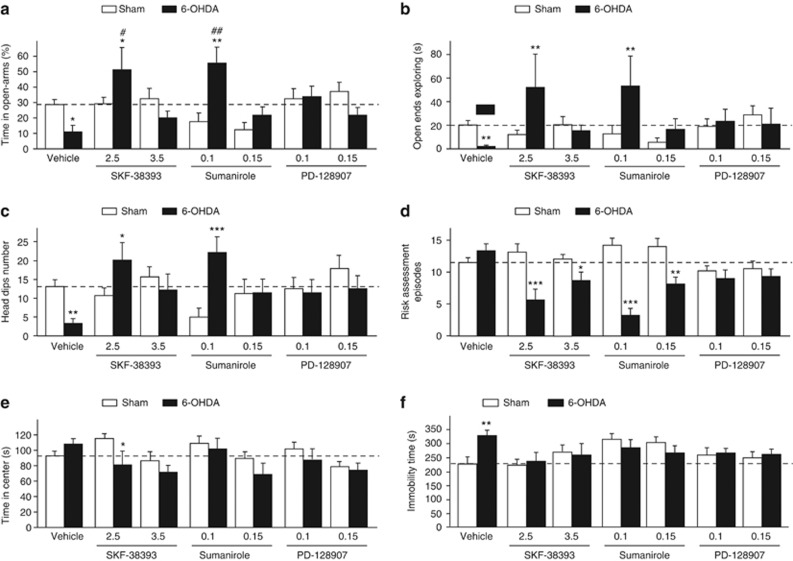Figure 3.
Effects of dopaminergic agonists on affective-related deficits induced by 6-OHDA SNc lesions. Evaluation of the effects of subchronic administration of SKF-38193 (2.5 and 3.5 mg kg−1), sumanirole (0.1 and 0.15 mg kg−1) and PD-128907 (0.1 and 0.15 mg kg−1) in the elevated-plus maze (a–e) and the forced-swim test (f), in sham-operated (white histograms) and 6-OHDA SNc-lesioned (black histograms) animals. Indexes of anxiety-related behaviors evaluated here were the percentage of time spent in the open arms (a), the time spent specifically at the end of the open arms (b), the number of head dips when animals are exploring the open arms (c), the number of stretched attend episodes toward the open arms (d) and the time spent in the central area (e). Overall, DA agonists reversed the anxiety-like behaviors induced by 6-OHDA SNc lesions, as well as the increase in the time spent immobile in the forced-swim test. Dot lines represented the mean of the behavioral performances of vehicle-treated sham animals. *P<0.05; **P<0.01, ***P<0.01 sham-operated versus lesioned within the same treatment and #P<0.05, ##P<0.01 between the treatments for sham-operated and lesioned conditions, respectively (n=8–21 per group). 6-OHDA, 6-hydroxydopamine; PD, Parkinson's disease; SNc, substantia nigra pars compacta.

